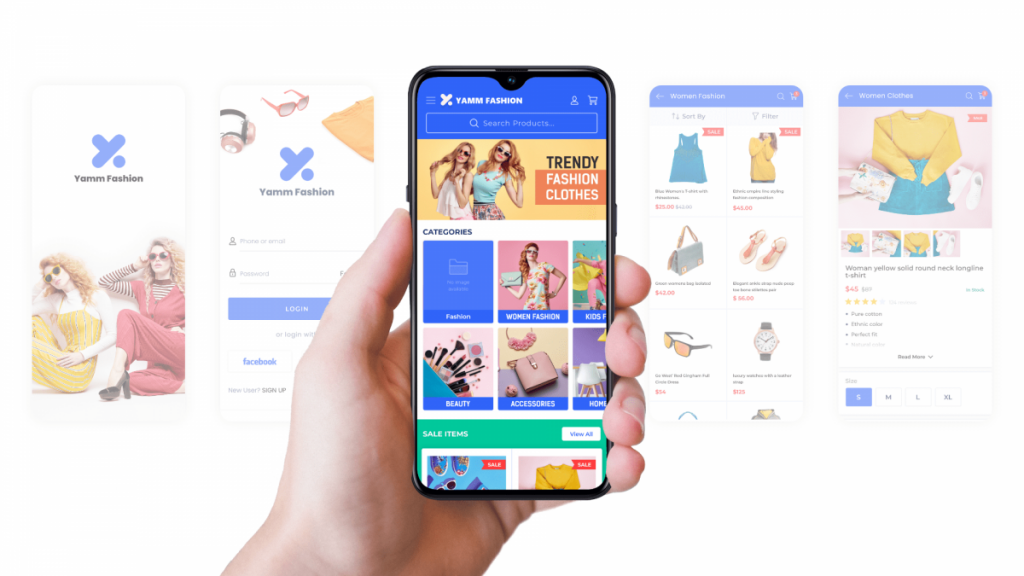Technology
New to App Testing? Here are the Three Essential Kinds of App testing

Even in a simple app, there are many things that can go wrong. Companies generally lean on app testing techniques to address all areas where their apps can have performance issues.
There are many different areas of an app where bugs can creep up. A myriad of testing techniques exist to serve each of these areas.
Anyone using a free online app maker for iOS and Android understands the importance of app testing. It is the last defense companies have against any type of performance or design issue.
Knowing the crucial types of app testing is vital for entrepreneurs new to the mobile app market and using an app creator online. This is because top mobile app builders these days are very conducive to mobile app testing.
Studying every type of app testing is a very tedious task for most companies and individuals. The solution lies in recognizing a few crucial app testing techniques that help identify core issues.
This piece covers the three main kinds of app testing absolutely essential for a sound feedback on a mobile app build.
#1 Usability testing
Much of app testing is about learning whether users are comfortable using a certain part of the app. The general foundation of app testing comes from the need to optimize user experience above all else.
Usability testing offers a comprehensive take on whether users are able to use the app without any hiccups.
This type of testing brings several crucial factors into the picture. User satisfaction, overall efficiency, and effectiveness all become variables that represent an app’s usability.
Each brings a different dynamic.
User satisfaction is judged based on the relative ease of performing any given function on an app. For example, an ecommerce app created from a WordPress to mobile app builder offers greater user satisfaction if the purchase journey is fast and simple.
Efficiency refers to cutting down on useless app screens and making it easy for users to perform tasks. Let’s continue with the same example of an ecommerce app. Adding too many intermediary screens in a typical purchase journey is an example of inefficiency.
Effectiveness refers to the broader working of the mobile app. If the app performs its core function without any performance issues creeping up, it is right to call it an effective app.
All these factors lead to optimality in mobile navigation, user retention, and other app KPIs.
#2 Compatibility
Companies don’t launch a mobile app for people using one particular mobile device. An app goes live for a whole range of mobile devices.
Testing the performance of mobile apps on different devices, platforms, databases, internet connection, and so on is crucial.
An app has to adjust between different platforms, screen resolutions, databases, and a myriad of other factors. Compatibility testing can help developers and testers verify if the app is able to offer similar experiences when these factors are changed.
Compatibility testing incorporates different techniques within its framework. These techniques allow developers to test the app in different possible conditions.
The techniques include –
-
Platform testing – To check whether an app performs well on both Android and iOS
-
Device testing – To check whether an app performs well on different devices with wide ranging configurations. This includes testing an app on devices that differ in screen resolution, RAM, battery, and so on.
-
Network testing – To check if app performs well in low speed internet connection (2G and 3G)
-
Database testing – To check if app is operates well with different databases such as DB, Oracle, and MySQL
These are the important popular and crucial compatibility testing methods generally used.
#3 App performance tests
These tests verify the app’s performance in different situations.
Almost 25% of people do not use an app after their first session. One of the main reasons for this is app performance. Too many apps in the mobile app market are not tested well enough for performance metrics. Thus, people who use them for the first time don’t have an optimal experience. High churn rates are often driven by core performance issues.
App testers use a number of performance testing methods. Some of them are covered in the following list.
-
Stability – To test if an app performs optimally over a sustained period of time under a given load
-
Volume – To test app performance when the number of users is increased over a period of time
-
Concurrent – To test app performance when multiple users are using the same part of the app
-
Stress – To test app performance when various APIs crash. Done to study the app in case various components start failing
-
Load – To test app performance when traffic is extremely high
These tests help developers understand where the performance issues lie.
While using an application build from a WordPress to mobile app builder, performance issues stem from the website itself. Thus, performance testing for app builders like AppMySite generally turns the spotlight on the website from which app data is imported.
In conclusion
There are a number of ways to test a mobile app. This is because there are many different areas where an app can have bugs, performance issues, and design problems.
This piece covers three kinds of app testing techniques. Those using an app creator online should study these techniques closely. Ultimately, this is not an exhaustive list of app testing methods.
However, the aforementioned techniques cover areas where most app bugs and performance issues are found.
-

 Health & Fitness6 days ago
Health & Fitness6 days agoBudget Cuts Slash Vital Health-Tracking Programs in the U.S.
-

 Business5 days ago
Business5 days agoUS Stock Market Soars on Positive Jobs Data and Trade Optimism
-

 Business6 days ago
Business6 days agoUS Stock Market Soars as Jobs Report Surprises and Trade Tensions Ease
-

 Healthcare6 days ago
Healthcare6 days agoMajor Cuts to U.S. Health Programs Raise Concerns Over Public Health Tracking
-

 Business3 days ago
Business3 days agoS&P 500 Rallies as Fed Holds Rates Steady Amid Trade Talks
-

 Crime7 days ago
Crime7 days agoU.S. Treasury Takes Aim at Major Mexican Cartel Linked to Fentanyl Trade
-

 Stock Market4 days ago
Stock Market4 days agoUS Stock Market Dips as Tariff Fears Resurface
-

 Civil Rights3 days ago
Civil Rights3 days agoSupreme Court Upholds Controversial Ban on Transgender Military Service














